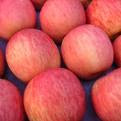 am craving something sweet in the morning, I automatically picture myself biting into a big, juicy grapefruit. And not that I am a “half of a grapefruit in the morning” type of person, but Ireally do enjoy it as part of a balanced meal.
am craving something sweet in the morning, I automatically picture myself biting into a big, juicy grapefruit. And not that I am a “half of a grapefruit in the morning” type of person, but Ireally do enjoy it as part of a balanced meal.Grapefruits are a great source of pectin, a soluble fiber that can help lower cholesterol and lower the risk of certain types of cancer, such as colon cancer. Grapefruits are part of the citrus family of fruits, and contain Lycopene and vitamin C- both powerful antioxidants. In addition, these big guys have vitamin A, potassium, and folate, vitamins and minerals that are good for eyesight, heart regularity and muscle contraction, and prenatal health, respectively. Some research suggests that grapefruits act to cleanse the body of toxins by increasing the work of some key liver enzymes. Although not scientifically proven, many would argue that grapefruits have metabolism-boosting powers! Whatever they facts may be, grapefruits always seem to do the body well. And the difference between white, pink, and ruby red? As we always preach…the deeper the color, the more nutrients inside, although all 3 are great choices!

**Note: Unfortunately, grapefruits may negatively interact with certain medications, due to their inhibition of a certain intestinal enzyme. So always check with your physician and pharmacist to be aware of all possible food/drug interactions!
Grapefruits can be found all year, but the height of the season is winter into spring, and the US is the largest producer, worldwide.
Large grapefruit (4.5 inch diameter) has only 53Kcal, 2g fiber!
How to pick it?
Look for a firm fruit that has some elasticity when pushed. At room temperature, they should smell sweet, and although some discoloration in fine (in fact color spots often mean optimal ripeness!), look for fruits where the skin is smooth, and not dried out.
What to do with grapefruit?
1. Eat it plain as a snack! I peel it and place it in Tupperware to bring to work as an on-the-go snack, or I bring it to work whole and snack on it at my desk. If the taste is a little bitter for you, add a little sweetness (be it Splenda, Truvia, sugar in the raw, or just plain honey).

2. Supreme it and add it to green salads or grain salads. Don’t know how? Watch this
3. Make fresh grapefruit juice; place some in ice trays and make little grapefruit ice pops!
4. Make a salad dressing, using fresh grapefruit juice instead of vinegar
5. Make a fresh grapefruit martini
6. Make it into a dessert- baked grapefruit:
Preheat oven to 375F, cut grapefruit in half lengthwise, cut out middle white part from each half and loosen sections. Sprinkle both sides with 1 Tbsp honey and 2 tsp cinnamon (total); bake for 10-15 minutes.
--Samantha Jacobs, RD CDN






























